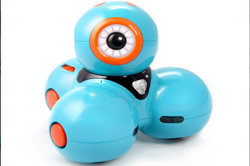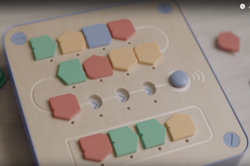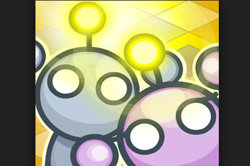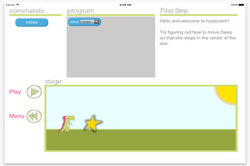Bee-Bot
A coding game featuring a programmable bee robot that introduces students to basic programming skills based on directional language. Students create a sequence of steps using the controls: forwards, backwards, left and right turns, which the bee bot follows in order to solve simple problems such as herding sheep into a pen. Bee bot game is set on farms and a flower garden and becomes increasingly complex as students progress through the levels.
Additional details
| Year band(s) | 1-2 |
|---|---|
| Content type | Tools for learning |
| Format | Web page |
| Australian Curriculum Digital Technologies code(s) |
AC9TDI2P01
Investigate simple problems for known users that can be solved with digital systems
AC9TDI2P02
Follow and describe algorithms involving a sequence of steps, branching (decisions) and iteration (repetition) |
| Keywords | Computer programming, Coding, Algorithms, Directional language, Instructions, Robot, Programmable robot, Floor robots, Bee-bots, Beebot, Bee bots, Beebots |
| Organisation | TTS Group |
| Copyright | 2016 Terrapin Software. May be subject to Copyright Act statutory licence. |
Related resources
-

LEGO® Education SPIKE™
LEGO® Education SPIKE™ enables students to create and program solutions using science and engineering practices and computational thinking.
-

Dash Robots
Dash is programmable robots. They connect via Bluetooth with built in sensors to respond to voice and navigate objects.
-

Robot Turtles
A programmable turtle that moves around a board according to simple directional steps to collect its jewels and win the game.
-

Primo
A play set available for purchase that introduces young learners, from 3 years old and up, to programming basics as they create steps using blocks that instruct a wooden robot.
-

Lightbot
A programming puzzle app, available for use on multiple devices, teaching students coding concepts as they guide a robot to solve problems and light up tiles.
-

Daisy the Dinosaur
A free iPad app featuring a dinosaur that can be programmed to complete a series of simple tasks including instructions to produce a desired outcome.
-

Cool Tools to Help Kids Learn to Code
Here are some suggested apps that encourage children to code and become creators, not just consumers, of the technology they use.
-

Alice
Alice is a FREE 3D programming environment that makes it easy to create an animation for storytelling, playing an interactive game, or a video to share on the web.
